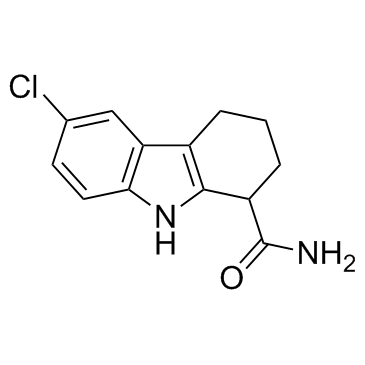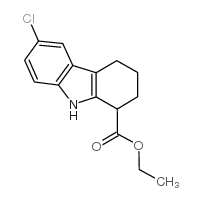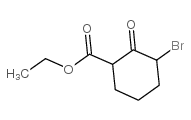49843-98-3
| Name | 6-chloro-2,3,4,9-tetrahydro-1H-carbazole-1-carboxamide |
|---|---|
| Synonyms |
6-Chloro-2,3,4,9-tetrahydro-1H-carbazole-1-carboxamide,racemic
6-Chloro-2,3,4,9-tetrahydro-1H-carbazole-1-carboxamide UNII:L19ECD5014 EX 527 1H-Carbazole-1-carboxamide, 6-chloro-2,3,4,9-tetrahydro- 6-chloro-1,2,3,4,9-pentahydro-4aH-carbazolecarboxamide SIRT1 Inhibitor III Selisistat 6-Chlor-1,2,3,4-tetrahydrocarbazol-1-carboxamid 6-chloro-2,3,4,9-tetrahydro-1H-carbazole-1-carboxylic acid amide 6-chloro-2,3,4,9-tetrahydro-1-H-carbazole-1-carboxamide EX-527 |
| Description | Selisistat (EX-527) is a potent and selective SIRT1 inhibitor with IC50 of 98 nM. |
|---|---|
| Related Catalog | |
| Target |
SIRT1:98 nM (IC50) SIRT2:19.6 μM (IC50) SIRT3:48.7 μM (IC50) |
| In Vitro | Selisistat (EX-527) is an inhibitor of SIRT1 enzymatic activity (IC50, 98 nM), identified in a high-throughput screen using bacterially expressed human SIRT1. Selisistat (EX-527) inhibits SIRT1 in a concentration-dependent manner with an IC50 of 38 nM, in agreement with the activity on bacterially expressed SIRT1. Selisistat (EX-527) has much lower potency against SIRT2 (IC50, 19.6 μM) or SIRT3 (IC50, 48.7 μM) but does not inhibit class I/II HDAC activity at concentrations up to 100 μM[1]. Selisistat (EX-527) exerts an inhibitory effect on SIRT1 activity without affecting SIRT1 expression on both mRNA and protein levels[2]. |
| In Vivo | Selisistat (EX-527) abolishes Resveratrol (RSV)-induced attenuation of microvascular inflammation in ob/ob septic mice. Finally, ob/ob mice in Sepsis+RSV group has significantly increased 7-day survival vs. Sepsis+Vehicle group[3]. |
| Cell Assay | The immortal mouse macrophage cell line RAW264.7 are used. Cells are seeded in 96-well dishes at a density of 3 × 103 cells/cm2 and treated with high glucose at the concentrations of 5.6, 11.1, 25 and 30 mM, alone or with SRT1720 (1 μM) or Selisistat(10 μM) for 24 h. The stock solution of SRT1720 or Selisistat is prepared by dissolving each of them (in powder form) respectively in DMSO yielding a concentration of 100 μM and then stored at -80°C. MTT solution (0.5 mg/mL) is then added to each well and cells are incubated for 4 h at 37°C in a 5% CO2 incubator. Subsequently, the supernatant is removed, the formation of farmazan is solubilized with DMSO and measured at 540 nm with a Bio-Rad Model 680 Plate Reader[2]. |
| Animal Admin | Mice[3]Mice are injected with Resveratrol (RSV) 30mg/kg (4 mL/kg) or equivalent volume of DMSO (Vehicle) (4 mL/kg) intraperitoneally 18 hours pre-sepsis. This dose of RSV in mice is as per documented literature. In one group of mice, RSV pre-treated mice receive Selisistat (10 mg/kg intraperitoneally; 4mL/kg, Vehicle: DMSO) within 10 minutes of cecal ligation and puncture. |
| References |
| Density | 1.4±0.1 g/cm3 |
|---|---|
| Boiling Point | 531.7±38.0 °C at 760 mmHg |
| Melting Point | 179.0 to 183.0 °C |
| Molecular Formula | C13H13ClN2O |
| Molecular Weight | 248.708 |
| Flash Point | 275.4±26.8 °C |
| Exact Mass | 248.071640 |
| PSA | 58.88000 |
| LogP | 2.22 |
| Appearance | white to beige |
| Vapour Pressure | 0.0±1.4 mmHg at 25°C |
| Index of Refraction | 1.688 |
| Storage condition | Store at +4°C |
| Water Solubility | Soluble in dimethyl sulfoxide, ethanol and dimethyl formamide. |
| Symbol |

GHS06 |
|---|---|
| Signal Word | Danger |
| Hazard Statements | H301-H319 |
| Precautionary Statements | P301 + P310-P305 + P351 + P338 |
| Hazard Codes | Xn |
| Risk Phrases | 22-36 |
| Safety Phrases | 26 |
| RIDADR | UN 2811 6.1 / PGIII |
| Hazard Class | 6.1 |
| Precursor 4 | |
|---|---|
| DownStream 0 | |




